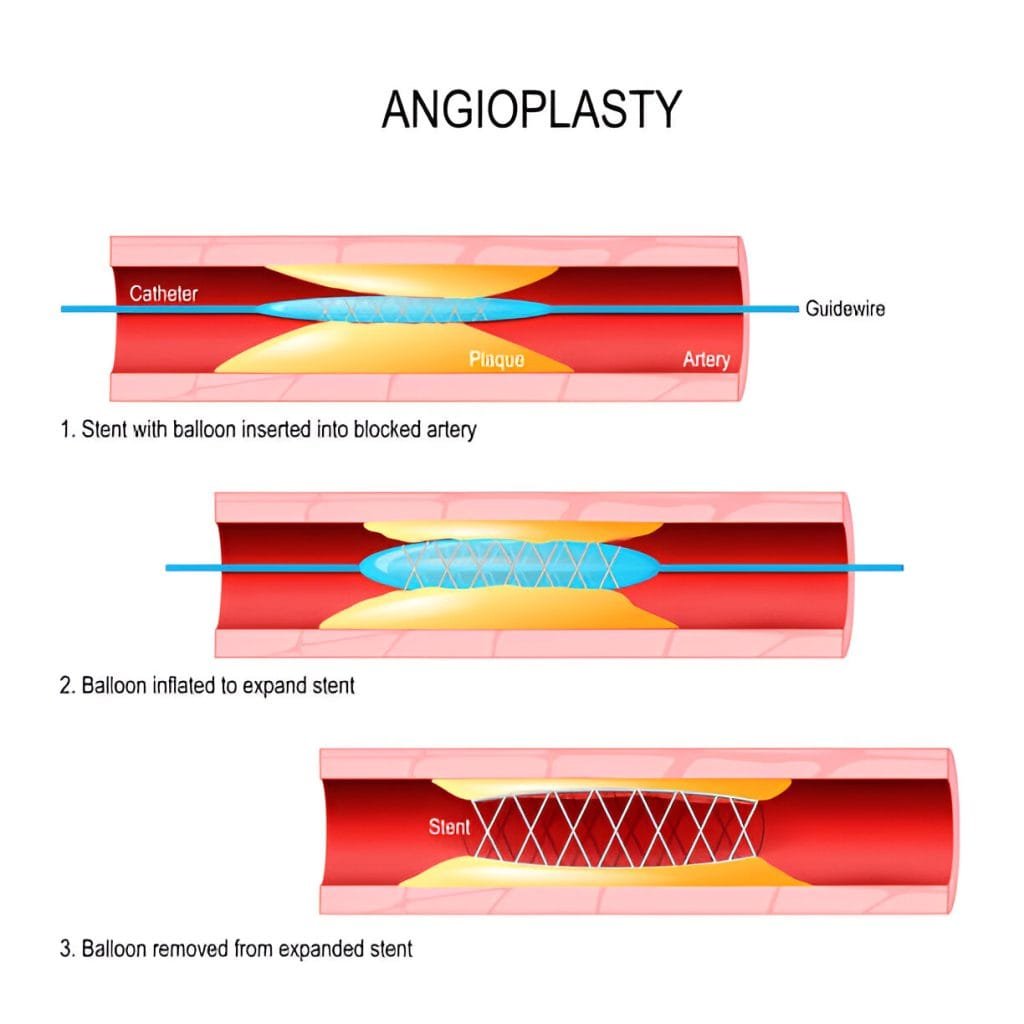Cardiac Care

Interventional diagnostic techniques in cardiology are advanced procedures that combine diagnosis and treatment, often performed in real-time. This can be demonstrated through the combination of cardiac catheterization and coronary angioplasty, both aimed at addressing cardiovascular issues with minimally invasive approaches.
Cardiac catheterisation, also known as coronary angiography, is a procedure that involves threading a thin, flexible tube (catheter) through blood vessels to access the heart and its blood vessels. It is primarily used to diagnose and evaluate various heart conditions, including coronary artery disease, valve abnormalities, and structural defects.
During the procedure, a catheter is usually inserted through an artery in the groin, arm, or wrist and guided to the heart. Contrast dye is injected through the catheter, and X-ray imaging captures detailed images of the heart’s blood vessels, revealing any blockages or abnormalities. Identifying blockages or constrictions in the coronary arteries provides early detection of conditions that could lead to angina or heart attacks, determining appropriate treatment strategies.
Furthermore, cardiac catheterization aids in evaluating heart valve functionality, and pinpointing issues like valve stenosis or regurgitation. In the field of congenital heart health, this technique excels in diagnosing structural abnormalities and defects, enabling timely intervention. It also plays a key role in assessing pulmonary hypertension by gauging blood pressure within the heart’s chambers and pulmonary arteries.
Coronary angioplasty is a procedure often performed during cardiac catheterisation to treat coronary artery disease. It involves inflating a balloon-like device within a narrowed or blocked coronary artery to widen it and improve blood flow. In some cases, a stent—a small mesh-like tube—is placed in the treated area to keep the artery open, effectively reducing the risk of re-narrowing.
During coronary angioplasty, a deflated balloon catheter is positioned at the site of the blockage. The balloon is then inflated, compressing the plaque and widening the artery. In some cases, a stent is placed to provide structural support to the artery and prevent re-narrowing.
Primarily, the technique serves as a vital mechanism for restoring blood flow within coronary arteries that have narrowed or become obstructed. By effectively reopening these compromised passages, the procedure offers relief from angina, alleviates chest pain, and notably mitigates the threat of heart attacks. The swiftness of its action is particularly crucial during acute heart events, affording immediate relief through the restoration of optimal blood flow.
Interventional diagnostic techniques like cardiac catheterization and coronary angioplasty have revolutionized the field of cardiology. By combining diagnosis and treatment, these procedures allow cardiologists to swiftly diagnose heart conditions and offer immediate therapeutic interventions with shorter recovery times, reduced risk of complications, and avoidance of open-heart surgery. This leads to improved patient outcomes and enhanced quality of life.
